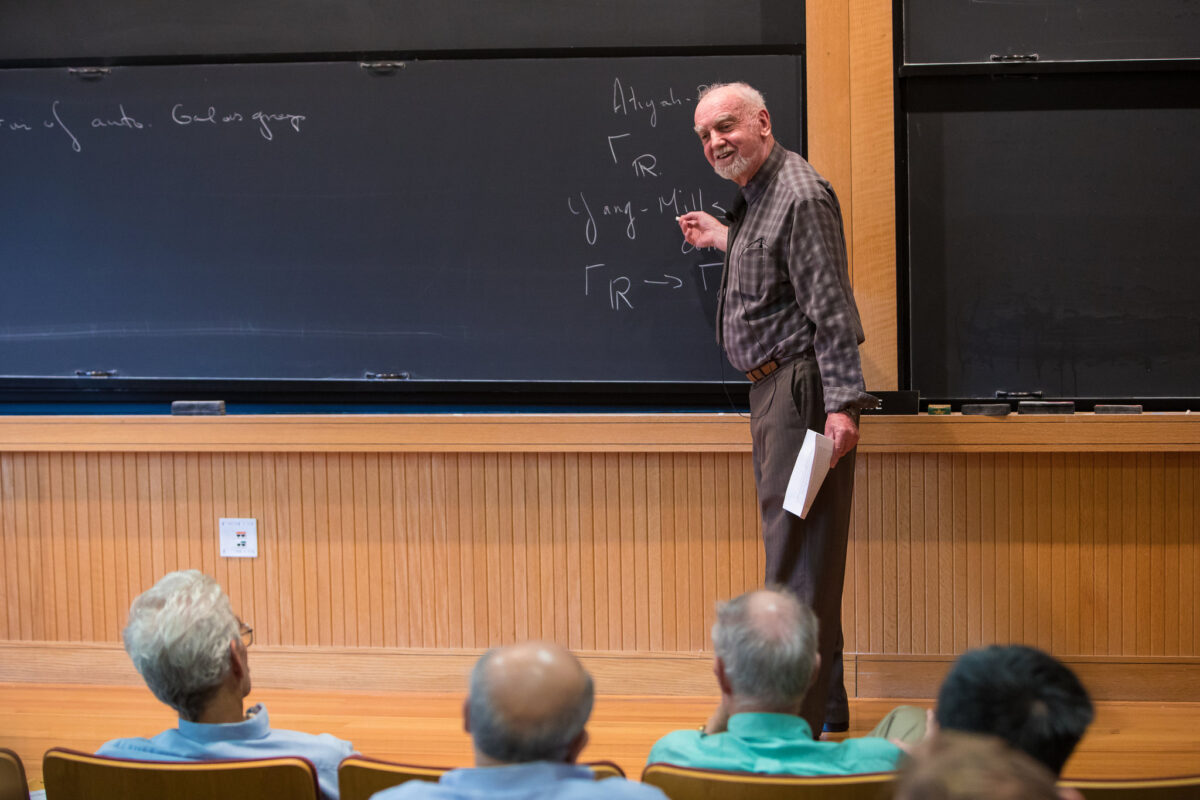Five years ago, in 2018, Dr. Langlands was awarded the Abel Prize, one of the highest honors for mathematicians, for “his visionary program connecting representation theory to number theory.” This groundbreaking initiative, known as the Langlands Program, has its roots in a 17-page letter written by Dr. Langlands to the French mathematician André Weil in 1967, setting forth a series of tentative ideas.
The Complexity of the Langlands Program
- Even Wikipedia, known for simplifying intricate ideas, concedes that the Langlands Program is composed of “very complicated theoretical abstractions, which can be difficult even for specialist mathematicians to grasp.”
- Despite its complexity, the Langlands Program has captivated the mathematical community with its ambitious goal of forging connections between two seemingly disparate realms of mathematics: number theory and harmonic analysis.
Understanding the Two Pillars: Number Theory and Harmonic Analysis
I.Number Theory
- Number theory, the arithmetic study of numbers and their relationships, has been a cornerstone of mathematical exploration for centuries.
- Examples of such relationships include fundamental concepts like the Pythagorean theorem (a² + b² = c²).
- Mathematicians in this field deal with discrete arithmetics, such as integers, uncovering the secrets hidden within the world of whole numbers.
II.Harmonic Analysis
- In contrast, harmonic analysis delves into the study of periodic phenomena, focusing on mathematical objects that are more continuous in nature, like waves.
- While number theorists examine discrete elements, harmonic analysts navigate the continuous realm, seeking to understand the intricacies of periodic functions and their applications.
The Purpose of the Langlands Program
- At the heart of the Langlands Program lies an audacious attempt to find profound connections between number theory and harmonic analysis.
- The program’s inception was motivated by a desire to bridge the gap between these two distant branches of mathematics, each with its unique set of principles and problems.
Historical Context: Abel and Galois
- To appreciate the Langlands Program fully, it’s crucial to understand the historical context that inspired its pursuit.
- In 1824, Norwegian mathematician Niels Henrik Abel demonstrated the impossibility of finding a general formula for the roots of polynomial equations with a power greater than 4.
- This limitation posed a challenge for mathematicians seeking universal solutions to polynomial equations.
- Around the same time, French mathematician Évariste Galois independently reached a similar conclusion but proposed a novel approach.
- In 1832, Galois suggested that instead of fixating on precise roots, mathematicians could explore symmetries between roots as an alternative route.
- This idea laid the groundwork for the Langlands Program’s aspiration to unveil profound connections in the mathematical landscape.
Legacy of Curiosity: The Enduring Impact of the Langlands Program”
- The Langlands Program stands as a testament to the enduring curiosity and ingenuity of mathematicians.
- Dr. Langlands’ visionary pursuit, sparked by a letter penned over five decades ago, continues to inspire mathematicians worldwide to explore the profound interplay between number theory and harmonic analysis.










 Alphabet CEO Sundar Pichai Hits $1.1 Bil...
Alphabet CEO Sundar Pichai Hits $1.1 Bil...
 Puducherry Becomes First State to Integr...
Puducherry Becomes First State to Integr...
 Ancient Egyptian Genome Sequenced for th...
Ancient Egyptian Genome Sequenced for th...

